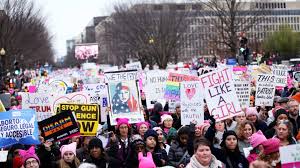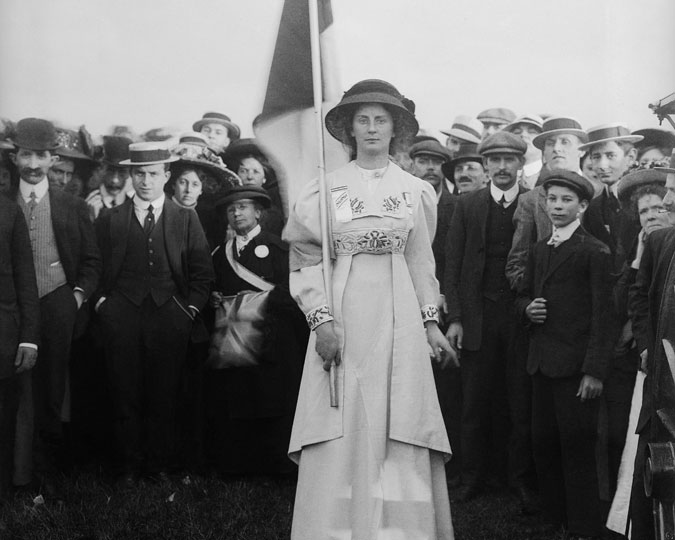100 Years of Women’s Suffrage
March 28, 2020
On August 18, 1920, the 19th Amendment gave women their right to vote. For nearly a century, women had been protesting to receive universal suffrage. Over the last 100 years, disagreements between campaign strategies often threatened to cripple the movement. Among all of the issues within the suffrage groups, many men fought back and attempted to stop women from gaining suffrage. The fight to get voting rights wasn’t easy, women were overlooked, shamed, beaten, and disowned. While their spirits and will were tested day after day, women finally gained their vote.
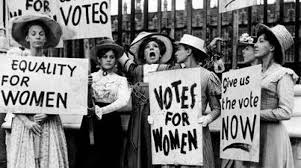
The women’s suffrage campaign dates back to the pre-civil war era. There are many pieces of evidence to prove that women were pushing for more equality much further back then most history lessons would show. One of the better-known pieces is from 1851. Sojourner Truth, an abolitionist, and activist for women’s rights as well as a former slave, gave her famous speech, “Ain’t I a Woman” at a women’s rights convention. Once the Civil War broke out,

the conversations diminished due to war stress. After the war, the conversation was brought up once again and the 15th Amendment, which allowed all males ( including blacks) to vote. Suffragettes–women fighting for the right to vote- refused to support this amendment. This caused an agreement between suffrage groups, as some believed in supporting the amendment while others didn’t. Eventually, that conversation was dropped and women continued to move forward.
In the years following, women played a larger role in many movements, such as moral reform societies. Despite their crucial role in many movements and reforms, men still degraded women. Part of that was what is now often referred to as the Cult of Womanhood. This was the belief that the only true woman was submissive to her husband, attentive to her children, and strickly a homemaker to clean and cook. Many women pushed back against this belief and this resulted in a new definition of a woman.
In 1848, a convention was held in Seneca Falls, New York. It consisted of mainly women and very few men. The participants were invited by the reformists Elizabeth Cady Stanton and Lucretia Mott, who both played a large role in the women’s fight. Many consider that this was the convention that kicked off the long battle for equal rights, although similar meetings were held many years leading up to 1848. From this point on, many supporters worked to educate the public about equal rights and a woman’s right to be seen as an equivalent, rather than a man’s inferior. At the turn of the century, women pushed to have their right to vote, but legislative bodies refused to listen. Women began to realize that to gain their rights, they’d have to fight for them.
As women’s suffrage became a mass movement, many fought back. The National American Woman Suffrage Association (NAWSA) was formed on February 18, 1890, and it would become the largest voluntary group for suffrage. The NAWSA played a vital role in gaining the right to vote and contained some of the best-known leaders during this time. These leaders included Susan B Anthony, Carrie Chapman Catt, and Alice Paul. The organization worked on campaigns to promote suffrage.

From 1890 to 1920, this group had many ups and downs which resulted in members leaving to create their own suffrage groups. Many groups picketed and protested for their rights. In 1920, they finally won.
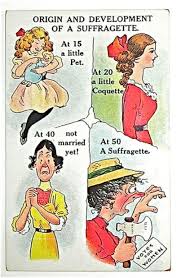
While resulting in a victory for women, it was no easy battle. Women faced many hardships for supporting the movement. Many anti-suffrage propaganda campaigns were released to fight back. It depicted women as loudmouths with the intent of ruining the government’s ways with their personal need to have rights. It showed women letting babies starve while they marched for women’s rights. Another common image was a woman wearing pants and asking what will men wear now that women have taken their place.
For the suffragettes, the propaganda was the least of their problems. Many women were disowned by their husbands and family. Often, men adopted out the children because they expected the women to take complete care of them. Without her at home because she was out protesting, the man felt unable to step-up and take care of the kids. Many women lost everything, including their families, fighting for their right to vote.
The worst of all was the physical abuse many women faced. At rallies, suffragettes were arrested and beaten. When in jail, the women refused to eat as a form of protest. Because of this, the women were force-fed, a tube forced down their throat and liquid food poured down. One of the better-known events is called “Night of Terror”. On November 14, 1917 women went to have a peaceful protest outside the Occoquan Workhouse. This peaceful protest took a gruesome turn. After 32 women were arrested, some several days before, the guards held nothing back. As stated by Mary Nolan in “Jailed for Freedom” by Doris Stevens, “The two men handling her were twisting her arms above her head. Then suddenly they lifted her up and banged her down over the arm of an iron bench—twice.” Women were clubbed and beaten by the guards.

Despite all odds, women won their rights. While getting the 19th amendment was a huge turning point in history, women still have a long fight in front of them in order to get full equality. The establishment of the 19th Amendment changed society. Women had a much larger role in the world; no longer were they nothing but submissive homemakers, they were active members of society. Through the following years, men tried time and time again to suppress women but they fought back just as strong.
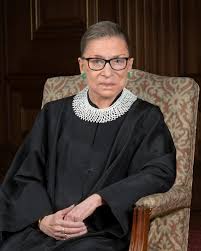
August 18, 2020, will mark the 100th anniversary of women’s suffrage. In recent years, the struggle and conflict each and every suffragette encountered has been acknowledged and honored. Many books and movies have been made to shine a light on this topic and authors and filmmakers share their stories and the struggle they went through during their fight.
The suffragettes not only fought for their own rights, but they started a movement, showed strength and confidence, and paved the way for future generations to continue the fight for justice and equality.
